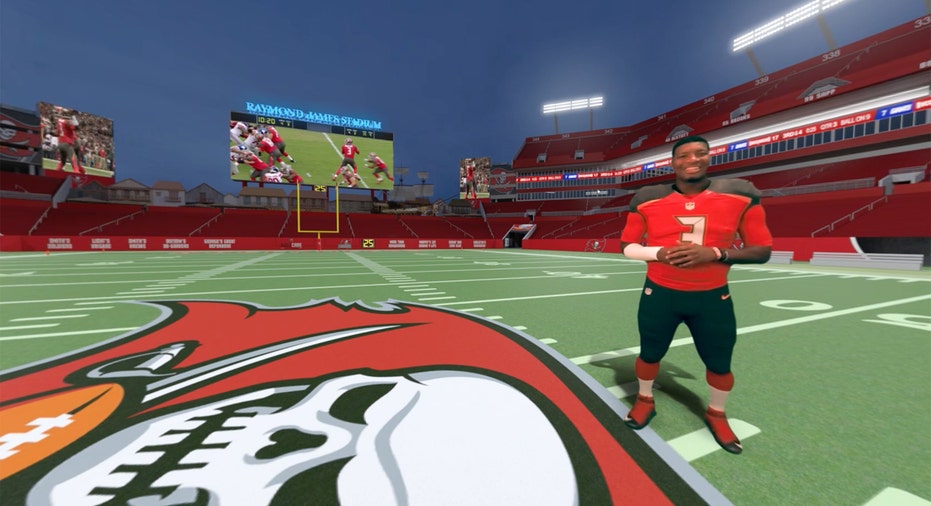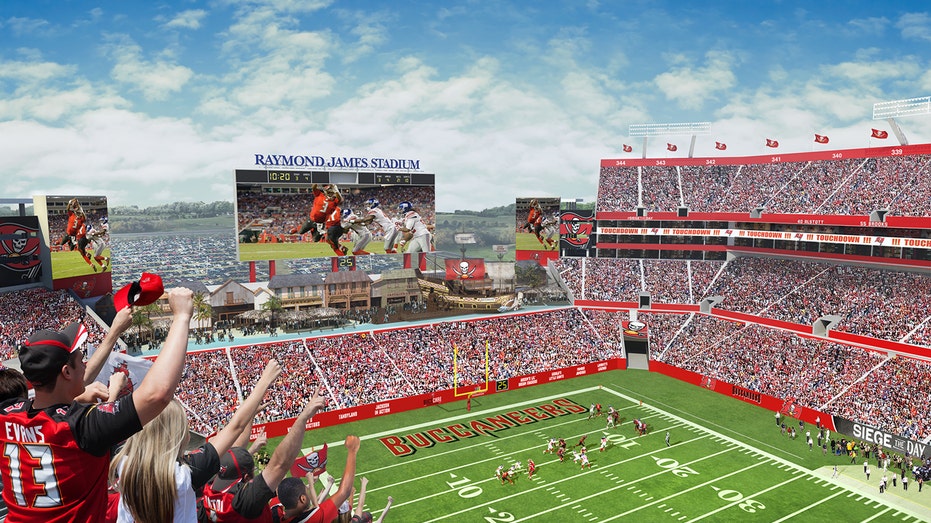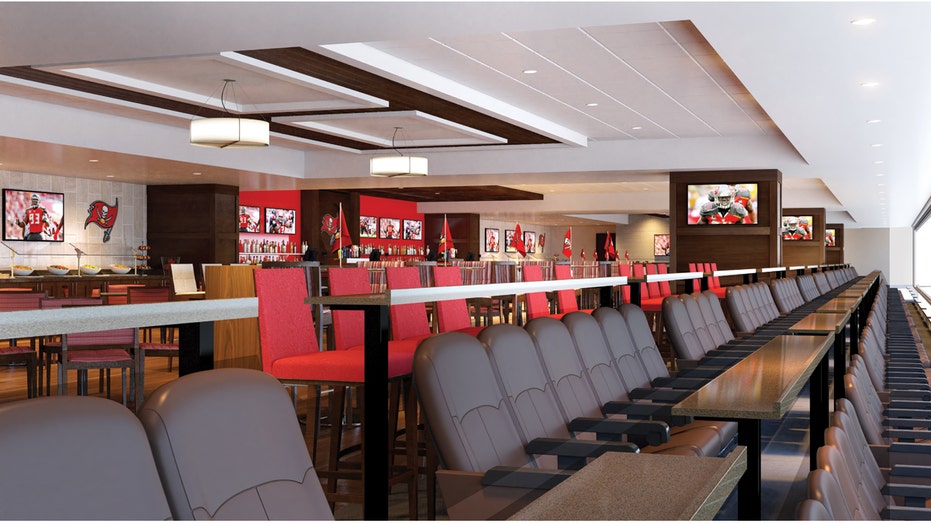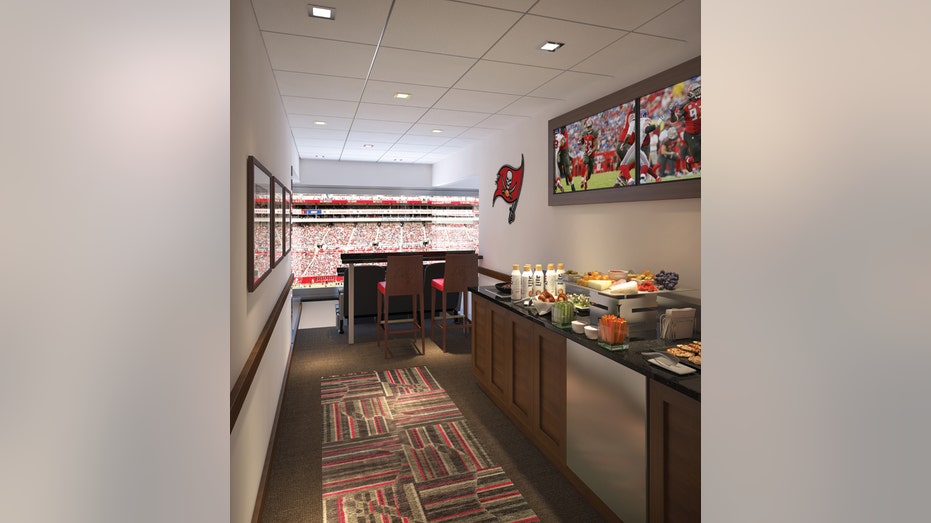Tampa Bay Buccaneers Bring Virtual Reality to the Gridiron

Virtual reality is seen as a potential game-changing technology in the sports world. For the Tampa Bay Buccaneers, the future is now.
The Buccaneers say they are the first professional sports team to merge live, 360-degree video inside a 3D environment for gameday experiences and digital stadium tours. The team is using the technology to introduce fans to the newly renovated Raymond James Stadium. Using a virtual-reality headset and a traditional videogame controller, fans can experience what it’s like to walk around the field and the Hall of Fame Club, a new addition to the 18-year-old venue.
The Buccaneers also launched a website that features 360-degree tours with “before” and “after” views of seating sections and luxury suites—the first use of such technology by a sports franchise. During the season, the Buccaneers have plans to offer behind-the-scenes video utilizing virtual-reality technology, adding another layer to the team’s aggressive push into a new frontier of the tech world.
Brian Killingsworth, chief marketing officer of the Buccaneers, believes virtual reality is changing the way the franchise sells tickets, pursues corporate partnerships and engages fans online.
“We’re excited to be innovators. We pride ourselves on being the first to do things,” Killingsworth told FOXBusiness.com.
The $140 million overhaul of Raymond James Stadium kicked off in January, and the project’s first phase will be completed by the start of the season. One of the most visible changes to Raymond James Stadium will be its high-definition LED video boards. The venue went from just two displays to six that measure a combined 28,000 square feet, the third most for any NFL team. The Bucs also constructed new luxury suites and the 240-seat Hall of Fame Club.
Raymond James Stadium remains a construction zone, but with virtual-reality headsets, current and prospective ticket holders can visualize the new-look stadium even before it opens its doors for the new season in September.

Killingsworth said it was too early to say if the use of virtual reality has boosted ticket sales, although the early response has been “overwhelming.” In the team’s nearby practice facility this week, the Buccaneers opened a PreView Center with a replica video board, an interactive touch screen and Facebook’s (NASDAQ:FB) Oculus Rift VR headsets, which connect fans to the virtual reality tour featuring quarterback Jameis Winston.
In the Buccaneers’ front office, virtual reality is helping the team make its pitch to potential sponsors. MVP Interactive, the company that built the tour of Raymond James Stadium, is able to place a company’s logo inside venues to give executives an early preview.
“We’re seeing a massive opportunity to leverage the technology to give a view from the seats from a season-ticket perspective, and of course corporate sponsors are really important to the finances of a particular team. When folks have their first opportunity to experience virtual reality, that alone helps qualify a sales pitch,” MVP Interactive CEO James Giglio said.
The Buccaneers are bringing virtual reality to fans through the team’s mobile app, where users will find video content throughout the season.

“There are a lot of things that happen during training camp or during the season that fans normally don’t have access to. We want fans to see things they haven’t seen before,” Killingsworth said.
Fans can expect virtual-reality footage from inside the locker room and other behind-the-scenes moments. Killingsworth envisions turning around virtual-reality content on the same day of a game, thus adding more value to the gameday experience. In addition to posting video to their app and social media, the Bucs will have the ability to open kiosks in the stadium with headsets ready to go. The team has partnered with XOS Digital, which offers the equipment and software needed to produce the video.
“Virtual reality is a great way to transport fans to places they’ve never been before. We’ve had customers post simple content to social media, and they’ve recorded a lot of views just because of how engaging the video is,” said Matt Bairos, CEO of XOS Digital.
Executives acknowledged that virtual reality remains in its infancy. Consumer adoption is a work in progress. Yet the Buccaneers, as early adopters themselves, see their investment in the technology as a way to accelerate its growth. “I think what the Bucs are doing is bring to market in a very approachable way,” said MVP Interactive’s Giglio. The Buccaneers’ app will give fans the option of choosing which device they want to use to watch video, either their smartphone or a connected virtual-reality headset such as the Samsung Gear VR.

When they’re on the road, the Buccaneers will have a 50-foot-long RV designed to introduce more people to virtual reality and “The New Raymond James Stadium Experience.” Killingsworth said the RV is a “great marketing tool” that will visit sponsors and other locations.
Virtual reality has made its way onto the field, too. Players started using a 3D simulator as a training tool last season, and the Buccaneers brought virtual reality to their youth quarterback clinic in a partnership with EON Sports.



















